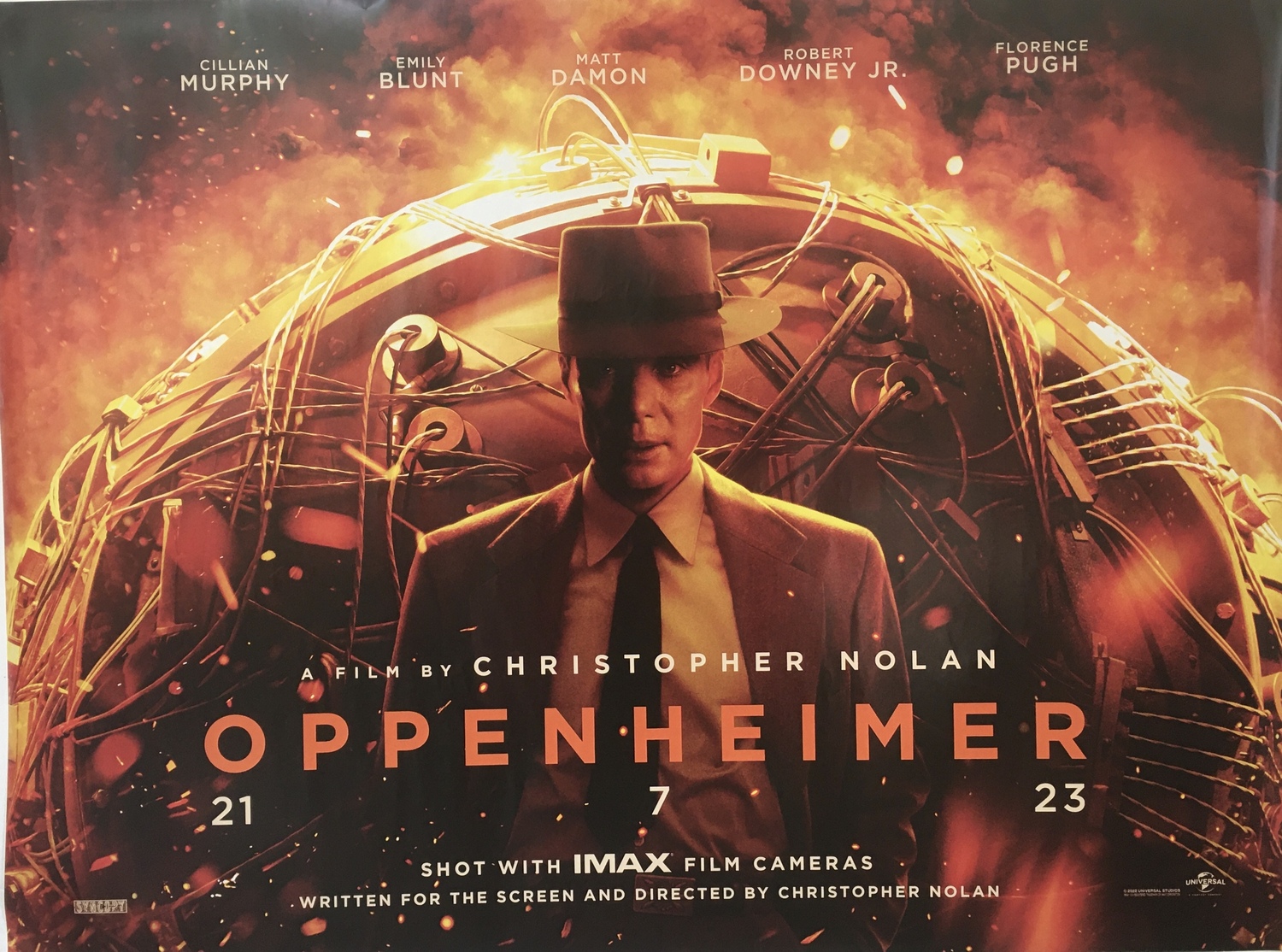| My rating | IMDb | Rotten Tomatoes | ||
|---|---|---|---|---|
| Critics | Audience | Critics | Audience | |
| 7/10 | 89/100 | 8.8/10 | 94% | 94% |
After seeing Barbie, it’s time to talk about the second half of “Barbenheimer”!
Oppenheimer, Christopher Nolan’s first attempt at a biopic, fell short of my expectations, after reading about it for weeks. Based on the 2005 biography “American Prometheus” by Kai Bird and Martin J. Sherwin, the movie tells the story of how J. Robert Oppenheimer (Cillian Murphy), a theoretical physicist, was indispensable to the development of the atomic bomb during World War II.
In true Christopher Nolan fashion, however, the story doesn’t follow a linear timeline. On the contrary: over the course of three hours, there are mainly four different timelines, similar to the structure of The Social Network. There are also two different color patterns that, according to Nolan, are meant to let the audience know when the story is being told from an objective point of view and when it’s being told by Oppenheimer’s subjective point of view.
In theory, it doesn’t sound that confusing, since it has been done before. But, unlike The Social Network, Oppenheimer has significantly more characters and it covers a longer period of time, from when he was still a student in the 1920s to the 1950s, with glimpses of events that happened afterwards too. Moreover, the movie cuts back and forward very quickly, especially in the last hour, so it requires greater attention from the viewer.
To make matters worse, the score, by Ludwig Göransson, is so incredibly loud that it often covers important parts of the dialogue. Having said that, it really is a powerful score and it makes a huge difference in creating tension during scenes that would otherwise have been just people talking in rooms.
The movie itself is rather interesting, focusing on the Trinity Test and the allegations that Oppenheimer was a member of the Communist Party. It is, however, a bit too long. With a runtime of 3 hours, the movie starts to drag a bit in the last hour, when the story takes place after the War is over and Lewis Strauss (Robert Downey Jr.), a senior member of the United States Atomic Energy Commission, has more scenes and almost becomes the focal point of the movie.
The cast is very large and it is filled with familiar faces, even though many of them have only a few lines of dialogue. Matt Damon is great as General Leslie Groves, who recruits Oppenheimer to lead the atomic bom project. He is somehow able to inject some humor in a dense movie.
Emily Blunt and Florence Pugh are basically the only two women in the movie and they play Oppenheimer’s wife Kitty and his lover Jean Tatlock, respectively. Neither of them has a lot of screen time, but they give good performances.
Kenneth Branagh, Gary Oldman, Rami Malek, Casey Affleck, Jack Quaid, Benny Safdie, and Jason Clarke are just a few names featured in the movie, with many more that roundup the stellar cast.

Despite the big number of characters, Oppenheimer is Cillian Murphy’s movie and his performance is exactly what you would expect from a man as complicated as the subject he’s playing. The audience can see it all in his face: guilt, fear, sadness, ambition. An Academy Award nomination is very likely to happen.
Oppenheimer is technically a good film and it leaves the audience thinking about how big decisions are made, as well as their consequences, and how the world changed after that. However, in the spirit of “Barbenheimer,” Barbie also invites the audience to reflect but, unlike Oppenheimer, it’s more hopeful, showing that we can still change the world we live in.




